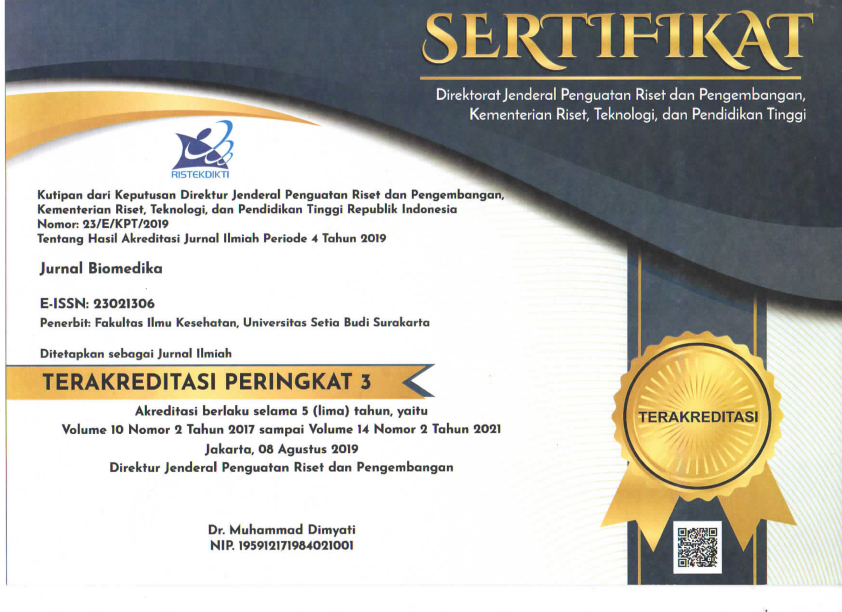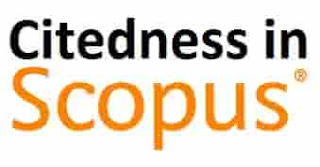The Effect of Seaweed Combination on the Extract of Robusta Coffee (Coffea robusta) Waste Extract in Producing Facial Mask Products
Abstract
Aceh is one of the biggest coffee producers in Indonesia’s province. The coffee farmers separate the coffee beans with the flesh of the fruit for processing the seeds, while the coffee fruit is considered as waste used as animal feed. Based on existing research, the coffee flesh produced contains polyphenol compounds as antibacterial. A very promising sea product from Aceh is seaweed. Brown seaweed (Sargassum sp.) is very common in the west coast of Aceh province. One of the derivatives is alginate. In this study, a combination of polyphenols extracts from coffee flesh and alginates from seaweed Sargassum sp. used as a basic ingredient in making face masks. Tests on organoleptic observations, pH testing, testing time of dried preparations, and testing of bacterial activity have been carried out in this study. In addition, variations in the mixture preparation based on the particle size of alginate powder have also been carried out in this study. The results obtained indicate that the yield produced from coffee fruit extracts is 5.86%, the highest yield of alginate is by potassium carbonate of 40.77%, the acidity of the combination is 4.5 - 6.5. For preparations, drying time has an average estimated time of approximately 6 minutes. Bacterial activity test showed that K2CO3 extracting agent concentration of 2% was strong against bacterial growth with a clean area of 14 mm. With these results, it can be seen the combination is able to inhibit the rate of bacterial growth, so it is recommended for alternative ingredients in the manufacture of cosmetics pharmaceutical industry masks.
References
Badan Pusat Statistik Provinsi Aceh. (2010). Produksi Tanaman Buah-buahan Menurut Jenis dan Kabupaten/Kota di Provinsi Aceh Tahun 2009 (Kwintal). http://www.bps.go.id. Diakses 28 Pebruari 2017
Departemen Farmakologi dan Terapeutik FKUI. (2007). Farmakologi dan Terapi, Edisi 5, Jakarta.
Esquivel, P. & Jimenez V.M. (2012). Functional properties of coffee and coffee by products. Food Research International. 46, 488-495.
Fardiaz, S. (1995). Antimicrobial Activity of Coffee (Coffea robusta) Extract. ASEAN Food Journal 10(3), 103-106.
Ferrazzano. (2011). Plant Polyphenol and Their Anti-Cariogenic Properties: A Review. Molecules Vol. 16, 2011: 1486 – 1507.
Harahap, M. R. 2018. Chemical Analysis of Environmental Conditions of Seaweed Culture in Pulo Raya Kabupaten Aceh Jaya, Aceh Province. Elkawnie : Journal of Islamic Science and Technology, 4(2), 77–88. https://doi.org/10.22373/ekw.v4i2.4457
Harahap, M. R. 2017. Identifikasi Daging Buah Kopi Robusta (Coffea robusta) Berasal Dari Provinsi Aceh. Elkawnie : Journal of Islamic Science and Technology, 3(2), 201-210.
Harmandini, F. (2009). Manfaat Kopi Untuk mencegah Berbagai Macam Penyakit. Female Kompas [Serial Online], http://female.kompas.com/read/2009/07/27/11533750/Manfaat Kopi untuk Mencegah Berbagai Penyakit.
Je, S., Hankinson, SE., Tworoger, SS., DeVivo, I. and Giovannucci, E. (2011). A Prospective Cohort Study of Coffee Consumption and Risk of Endometrial Cancer over a 26-Year Follow-Up. Cancer Epidemiology, Biomarkers & Prevention. DOI: 10.1158/1055-9965.EPI-11-0766
Najiyati, S. & Danarti. (2001). Kopi Budidaya dan Penanganan Lepas Panen. Jakarta: Penebar Swadaya.
Prasetyaningrum, A., & Purbasari, A. (2002). Ekstraksi Alginat dari Rumput laut dan Aplikasinya Pada Industri. Reaktor 6(2), 63-67. https://doi.org/10.14710/reaktor.6.2.63-67
Pujiyanto. (2007). Pemanfaatan kulit buah kopi dan bahan mineral sebagai amelioran tanah alami. Pelita Perkebunan, 23(2) 104-117. http://perkebunan.litbang.pertanian.go.id/dbasebun/asset_dbasebun/Penerbitan-20141207120101.pdf
Rahmadi, P., Pangestuti, R., & Salim, G. 2009. Potensi Rumput Laut Sebagai Bahan Dasar Kosmeseutikal. https://www.researchgate.net/profile/Gazali_Salim/publication/336532702_Potensi_Rumput_Laut_Sebagai_Bahan_Dasar_Kosmeseutikal_Potential_of_Seaweed_as_a_Cosmeseutical_Base_Material/links/5da738eda6fdccdad54ab343/Potensi-Rumput-Laut-Sebagai-Bahan-Dasar-Kosmeseutikal-Potential-of-Seaweed-as-a-Cosmeseutical-Base-Material.pdf
Ridwansyah. (2003). Pengolahan Kopi. Jurusan Teknologi Pertanian Fakultas Pertanian Universitas Sumatera Utara,USU Digital Library. http://repository.usu.ac.id/bitstream/123456789/776/1/tekper-ridwansyah4.pdf
Suparmi, S., & Sahri, A. (2009). Mengenal Potensi Rumput Laut: Kajian Pemanfaatan Sumber Daya Rumput Laut dari Aspek Industri dan Kesehatan. Majalah Ilmiah Sultan Agung 10(4), 95–116. http://jurnal.unissula.ac.id/index.php/majalahilmiahsultanagung/article/view/252
Widyotomo, S. & Sri, M. (2006). Ekstraksi Kafein Dari Dalam Biji Kopi. Warta Pusat Penelitian Kopi dan Kakao Indonesia. 22 (3), 133 – 141.
Widyotomo, S. & Sri, M. (2007. Kafein: Senyawa Penting Pada Biji Kopi. Warta Pusat Penelitian Kopi dan Kakao Indonesia, 23 (1) 44 – 50.























